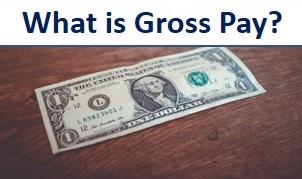Money laundering is the process of converting the proceeds of crime into legitimate funds.
In simple words, it is the method to conceal the origins of illegal money by passing it through a complex sequence of banking transfers or commercial transactions.

Table of Contents
Illegal Methods of Transferring Money
Many illegal activities, such as drug dealing generate large amounts of cash.
Storing and spending large amounts of cash could arouse suspicions of law enforcement agencies and therefore, money launders and their associates deposit cash frequently to different bank branches. After that, launders withdraw money from the legitimate account as clean income.
What Are The Methods Used for Money Laundering?

Smurfing
Many criminals participate in an activity called smurfing.
Smurfing involves dividing cash gained through illegal activities and giving the funds to different people (the Smurfs).
Smurfs proceeds to make multiple deposits into multiple accounts at different banks.

Shell Companies
One option is forming a Shell company, it’s fairly easy and there are plenty of law firms that help money launders.
Launders may turn to historic tax havens like Switzerland or places, where you can set up anonymous Shell companies, like the Cayman Islands or the US state of Delaware and Nevada.
Once a Shell company is established, launders make up some fake transactions for goods or services that they pay with dirty money.
As a result, that illegal income looks legitimate.
Also, It is also easy to find people who work in banking who don’t care if you are a shady client.

Stock Market & Exchange Offices
Criminals may also use the stock market, they use a technique called Mirror trading.
In this method, they use illegal Income to purchase the market share.
Similarly, they sell shares worth the same amount somewhere abroad.
The trades functionally cancel each other out, as a result, they successfully convert their dirty income into clean euros.
Money Launderers may also use foreign exchange offices to place illegal income into the financial system.

Anonymous Bank Accounts
In this technique, money launderers open anonymous accounts with fictitious names.
After that, the transaction is carried out entirely by the name of someone else.
However, in some countries, It is an offense to open a bank account in a false name.

Prize Money From Chance Games
In this technique, the winner of the lottery is found by the launderers before he gets his prize, Generally, he is given more money than the lottery he has won.
Then the grand prize is taken by the criminals.

Key Points
- Money laundering is a method of showing illegal income as a legal income.
- Dissociating the crime from the final transaction.
- Layering the income trail to foil any authorities.
- Integration of funds after complex banking transfers.
- A financial crime that may result in big penalties.
Case Study

One of the biggest money-laundering occurred between 2007 and 2015 in Estonia.
The Estonian branch of Danske Bank became a pipeline of illegal income flowing out of Russia, Azerbaijan and Moldova.
Some €200bn were moved through this small branch. Danske bank authorities now believe that a large part of that money was suspicious.
The trouble began in 2007 after Danske established its Estonian branch with the takeover of Finland’s Sampo bank.
Its Estonian branch represented just 0.5% of Danske assets but by 2008 non-resident business there accounted for 8% of pre-taxed profits.
Estonian regulators and Russia’s central bank had already warned that some clients were carrying out dubious financial transactions.
Also, in 2010, the bank’s executive board noted the high level of suspicious activity reported from Estonia.
By 2013, a record €32bn floated through the branch’s non-resident portfolio including about €8bn euros of so-called Mirror trades. The legal, but controversial trades were used to move money from Russia.
J.P.Morgan which handled dollar transactions in Estonia quit citing concerns about non-resident customers but it took an internal email to change everything.
Danske authorities sent an audit team to investigate which led to winding up of non-resident business by 2016.
Summary
- Money laundering meaning is to take funds through illegal practices and making them clean.
- It’s a process of cleaning illegal income.
- The true size and extent of this problem are impossible to quantify.
- Criminals clean hundreds of billions of dollars globally each year.
Money Laundering-Related Links
| Gross Pay and Net Pay | Guidelines of Financial Action Task Force (FATF) |
Frequently Asked Questions (FAQs)
1. What is the meaning of money laundering and why is it illegal?
It is a generic term used to describe the process which enables criminals to disguise the original proceeds of illegal income. It is illegal because it enables criminals to profit from the crime.
2. What are the most common methods of money laundering?
- Offshore accounts;
- Smurfing and money mules;
- Unregulated financial services;
- Prize amount from chance games;
- Anonymous bank accounts;
- Stock market;
- Shell companies.
- BCl3 Lewis Structure in four simple steps - November 1, 2023
- PH3 Lewis Structure in four simple steps - October 8, 2023
- PF3 Lewis structure in four simple steps - September 24, 2023



